Posts Tagged: pesticides
Neonics Severely Affecting Queen Bees
Everyone from scientists to environmentalists to beekeepers are clamoring for more research on the effects of neonicotinoids on honey bees. How...
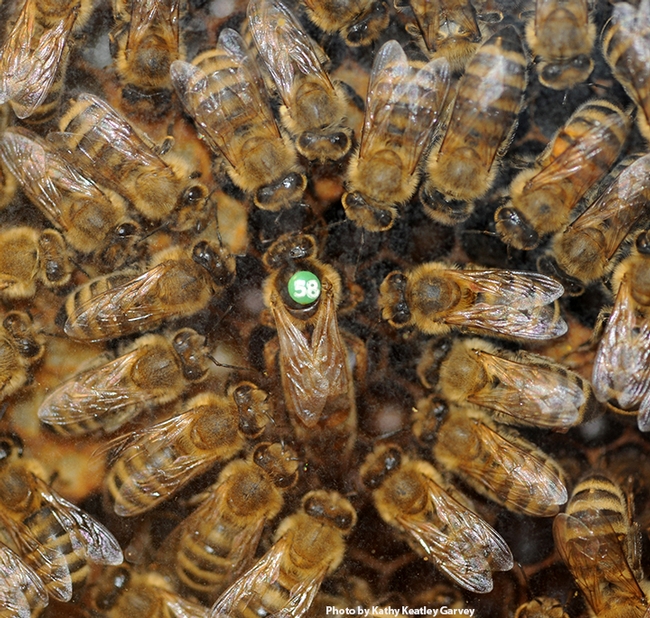
A queen bee circled by her retinue. (Photo by Kathy Keatley Garvey)
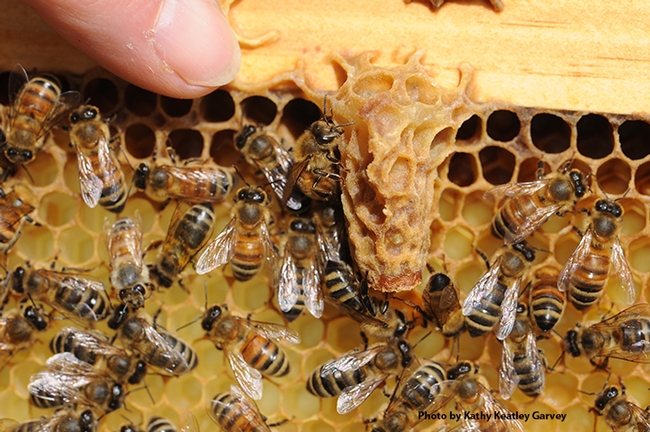
Worker bees cleaning out a queen cell. (Photo by Kathy Keatley Garvey)
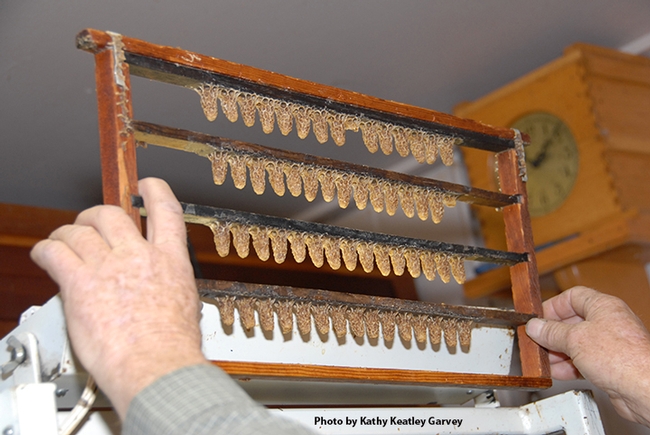
A bee breeder's queen cells. (Photo by Kathy Keatley Garvey)
Follow pesticide labels to prevent illegal residues
As consumers, we put a lot of care into the food we buy. We tend to trust that the produce we purchase at the local grocery store is free of pesticides and safe to eat.
Traces of pesticide residue are normal and even expected after pesticides are applied to food crops, but by the time produce is ready to be sold, purchased, and consumed, residues are usually far below the legal limit.
In its latest report from 2013, the California Department of Pesticide Regulation (DPR) reported that there was little or no detectable pesticide residue in 97.8 percent of all California-grown produce. This demonstrates a strong pesticide regulation program and pesticide applicators that apply pesticides safely and legally. However, there have been instances in California where a pesticide not registered for a specific crop has been used unintentionally, resulting in illegal residues and eventually crop loss and destruction.
The Environmental Protection Agency sets tolerances for the maximum amount of pesticide residue that can legally be allowed to remain on or in food.
DPR regularly monitors domestic and imported produce for pesticide residues and is considered the most extensive state residue-monitoring program in the nation.
The primary way pesticide applicators can assure that they make proper applications and avoid illegal pesticide residues is to follow the pesticide label. The UC Agriculture and Natural Resources Statewide Integrated Pest Management Program (UC IPM) put together a 26-page card set in English and Spanish on understanding pesticide labels. Although intended primarily for pesticide handlers, applicators, safety trainers, and pest control advisers, these cards can be useful for anyone who applies pesticides in urban or agricultural settings. The cards explain when to read the label, describe what kind of information can be found in each section of a pesticide label, and point out specific instruction areas that will help applicators apply pesticides safely and avoid illegal pesticide residues.
To download copies of the card set in English or in Spanish, see the UC IPM web site.
Author: Cheryl Reynolds
Our Bees Deserve The Best
This is National Pollinator Week and what better time to post some bee wisdom from Cooperative Extension apiculturist (now emeritus) Eric...
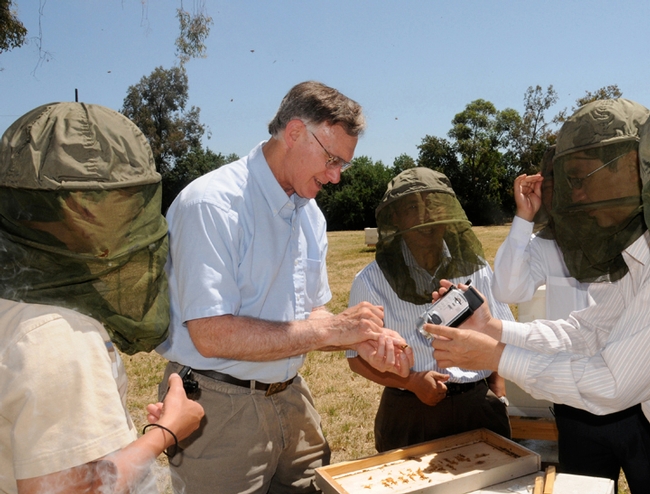
Extension apiculturist Eric Mussen (now emeritus, shows visitors the inside of a hive at the Harry H. Laidlaw Jr. Honey Bee Research Facility, UC Davis. (Photo by Kathy Keatley Garvey)
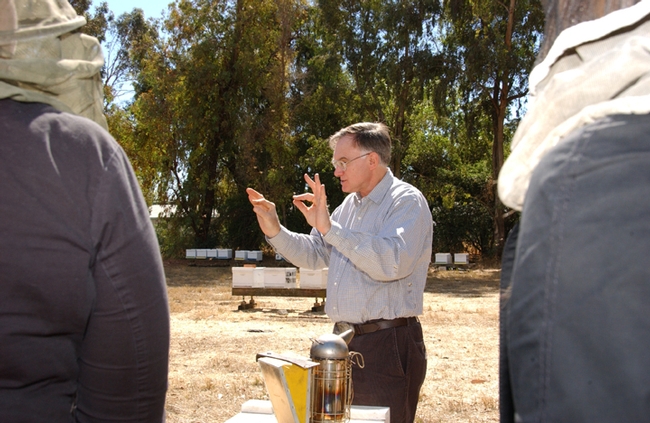
Extension apiculturist (now retired) Eric Mussen explains bees. (Photo by Kathy Keatley Garvey)
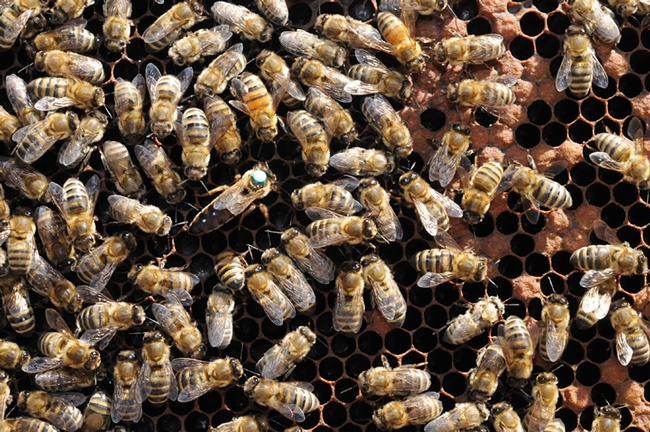
Inside the hive: the queen bee goes about laying eggs as worker bees tend to her needs and the needs of the colony. (Photo by Kathy Keatley Garvey)
When Bees Get in Trouble
"Bees are incredibly good at picking up what's in their environment." So said Senior Extension Associate Maryann Frazier of Penn State when she...
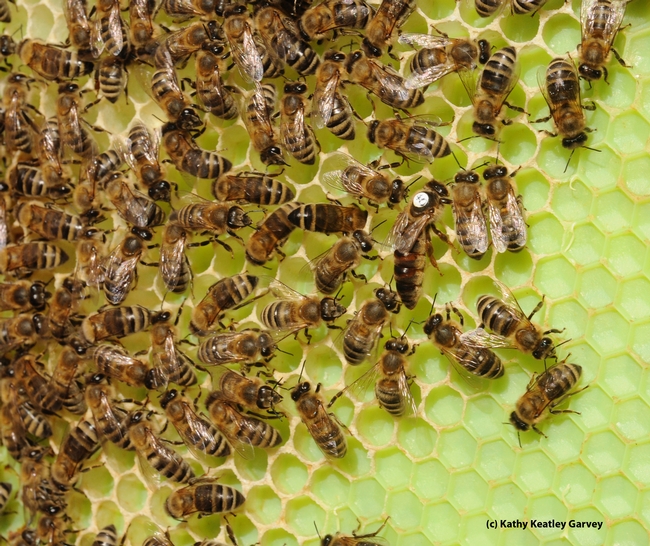
A queen bee and her colony at the Harry H. Laidlaw Jr. Honey Bee Research Facility, UC Davis. (Photo by Kathy Keatley Garvey)
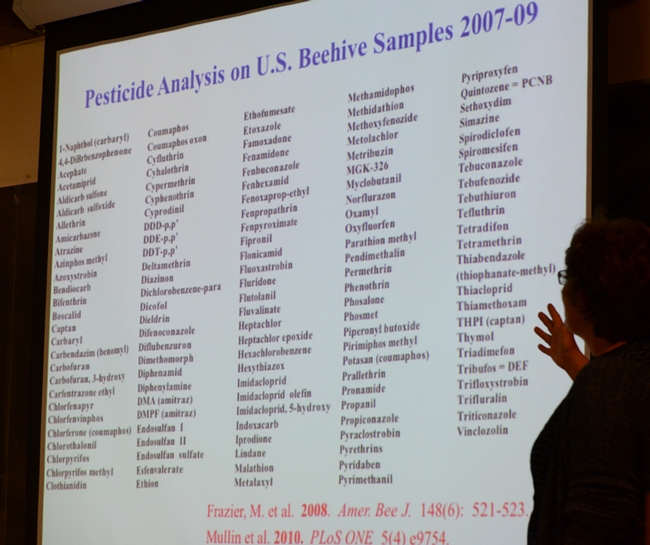
Maryann Frazier with the list of 171 pesticides screened in the U.S. survey. (Photo by Kathy Keatley Garvey)
Honey Bee Expert to Give UC Davis Seminar April 2 on Pesticide Conundrum
Pesticides. Honey Bees. The two don't go together, but how can we protect both crops and pollinators? "Pesticides may be necessary in today's...

Maryann Frazier inspects a hive. (Photo courtesy of Penn State)

Honey bees thriving at the Harry H. Laidlaw Jr. Honey Bee Research Facility, UC Davis. (Photo by Kathy Keatley Garvey)



